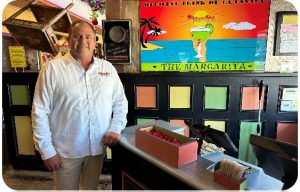
I love consistency. It brings me comfort. In fact, I drive the same way home. Every Day. Even if I’m coming from a slightly different starting point or have multiple route options, I stick to my path. It’s familiar, it’s efficient, and let’s be honest, it conserves brain power. It drives my wife crazy, but for me it’s a no brainer.
I once read that this kind of behavior would be a huge red flag for a spy. It’s too predictable, and predictability can increase the risk of being compromised. From that perspective, I’d make a terrible spy. But, when it comes to spying on businesses? Now that’s a different story.
You see, I’m constantly observing and analyzing what other businesses are doing—whether it’s their promotions, their service style, or their overall approach. I’m always looking for common practices that I can see with fresh eyes. Over the years, I’ve taken inspiration from (read: borrowed) ideas and concepts from almost every business I visit. Whether it’s their store layout, an ad placement, the way a staff member greets me, the words they use, or even how they follow up after a sale, I’m always watching.
I suppose it’s not really spying, but for someone who takes the same route home every day, calling it “business espionage” makes it sound a lot more exciting—like I’m on a secret mission.
And an important mission it is, because it’s a dangerous trap to never look anywhere beyond my day-to-day operations. Of course, it’s not a bad thing to focus on my business, compare YOY sales, create new systems to get better, and maintain customer service standards. But it can be a trap. If you aren’t looking at what surrounds you, how will you see what’s new, what’s changing and what the new trends are?
I recently heard a speaker explain what led to Sears’ downfall. For decades, Sears was the only game in town—nationwide, in fact. If they didn’t have it, you probably didn’t need it. And although their demise was complex, their failure to adapt and inability to innovate was a MAJOR theme. And by the time they recognized the need to shift strategy, they were already too far behind to recover. In fact, the founders of Home Depot approached Sears to invest in their concept and Sears scoffed at them…
The reason I’m so keen on this concept has to do with my current location, where I hold my lease and operate my business. When I first started out, I had a tiny location with terrible parking. When the lease was ending, I started looking for a new location and surprisingly, the prime spot in town was becoming available. The timing blew me away! This place was part of the fabric of the community. It had been home to another business for decades. A business EVERYONE in town knew of and had countless stories and memories of. But over those years, they had never updated themselves, never changed with the times. They just kept doing the same tiring thing over-and-over. And it had come to an end. Just like Sears. As I signed the lease for this location, for this community icon, the concept was fire-branded into my psyche. I would NEVER let that happen to my business.

And so, I continually observe and experiment. I throw spaghetti on the wall to see what sticks. I listen to staff ideas. I copy OR steal ideas. I consult professionals. I ask friends. I participate in a mastermind group. I follow other brands. I joined other Reward programs to see how they worked. In short, I’ve got my antennas up, constantly aware of what may work in my business.
Last year, I decided to add some mercantile items to my business. I’d seen this work in other businesses and thought it could be an add-on sale for customers already spending money with me. I developed a variety of simple and easy offerings, some that had a great story to go with them, some that were personal favorites, and some that were long shots. Here are some of the first mercantile items I offered:
Pancake Mix: Crazy? Maybe so. It’s a family recipe with an amazing backstory and VERY cool packaging.
There were more, but this is a good representation of what we offered. All in all, it was successful. A couple of these were huge movers and a couple were complete duds. It didn’t make a massive difference in terms of profit, but it did create a huge buzz with my customers. My business was not just doing the same thing over and over. There was something new, something exciting, and even some headscratchers. And guess what? Customers continued to ask about the items after they were out of stock. They even took pictures of the items in their homes and shared stories about who they gave the items to and how it created memories for them.
THIS is how I knew that it was successful – it made a difference for our customers. I wasn’t just the old business doing the same thing – like the place that went out of business before I moved in, or Sears. Albeit small, I tried something outside the normal that engrained my business further in my customers’ lives, I created a “new” experience at my “old” business.
After 29 years in business, I strongly believe that every single thing does NOT have to be perfect or profitable. The race is long, the lifetime value of a customer can be LARGE, and trying new things – ANY new thing – can create the ripples for your business that keep you relevant in the customers’ decision-making process. My parting message to you… keep your eyes peeled and TRY SOMETHING NEW!!!

 1-888-353-5012
1-888-353-5012